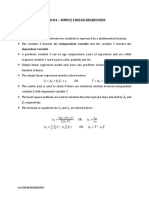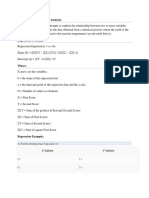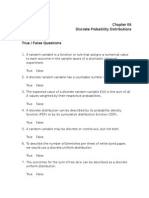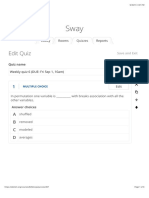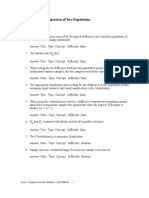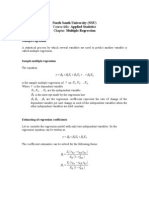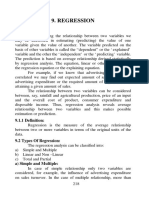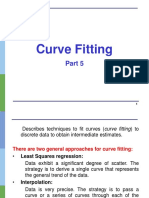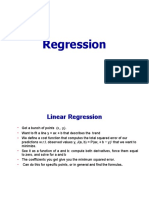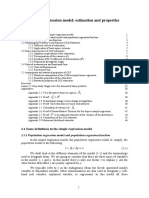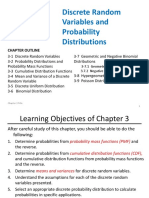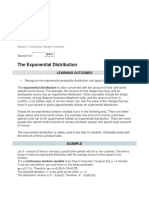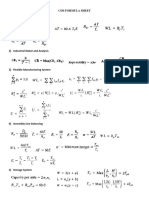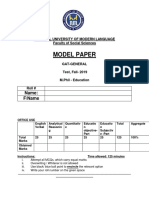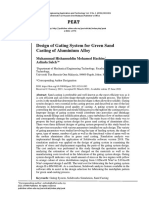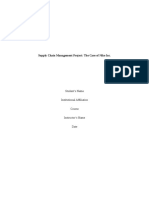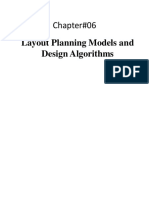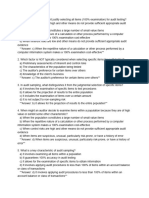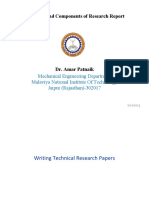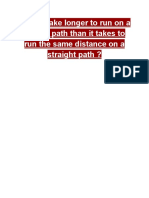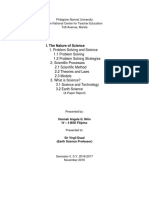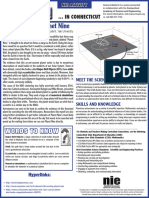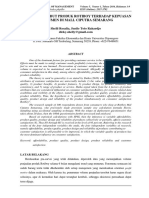0% found this document useful (0 votes)
221 views45 pagesChapter 14 Simple Linear Regression
The document discusses simple linear regression. It defines simple linear regression as involving one independent and one dependent variable, with the relationship approximated by a straight line. The simple linear regression model and equation are presented, with the estimated regression line determined using the least squares method to minimize errors. An example of using regression to analyze the relationship between stock market and Netflix returns is provided.
Uploaded by
Discord YtCopyright
© © All Rights Reserved
We take content rights seriously. If you suspect this is your content, claim it here.
Available Formats
Download as PDF, TXT or read online on Scribd
0% found this document useful (0 votes)
221 views45 pagesChapter 14 Simple Linear Regression
The document discusses simple linear regression. It defines simple linear regression as involving one independent and one dependent variable, with the relationship approximated by a straight line. The simple linear regression model and equation are presented, with the estimated regression line determined using the least squares method to minimize errors. An example of using regression to analyze the relationship between stock market and Netflix returns is provided.
Uploaded by
Discord YtCopyright
© © All Rights Reserved
We take content rights seriously. If you suspect this is your content, claim it here.
Available Formats
Download as PDF, TXT or read online on Scribd
/ 45
